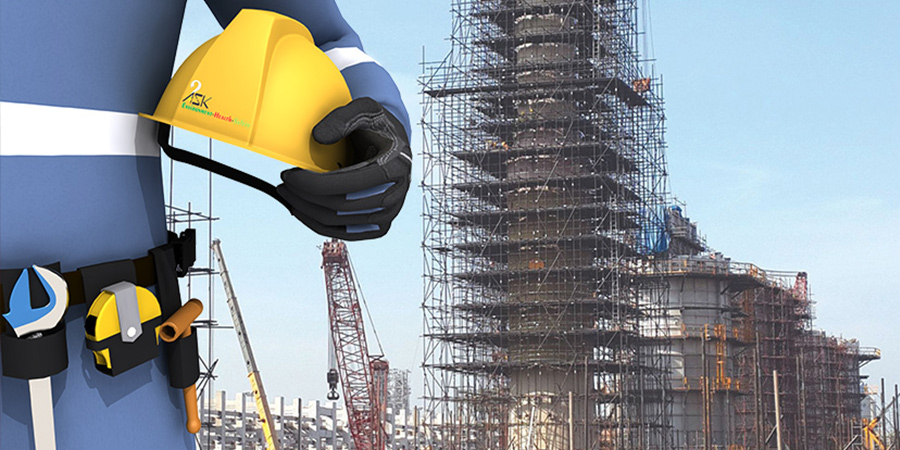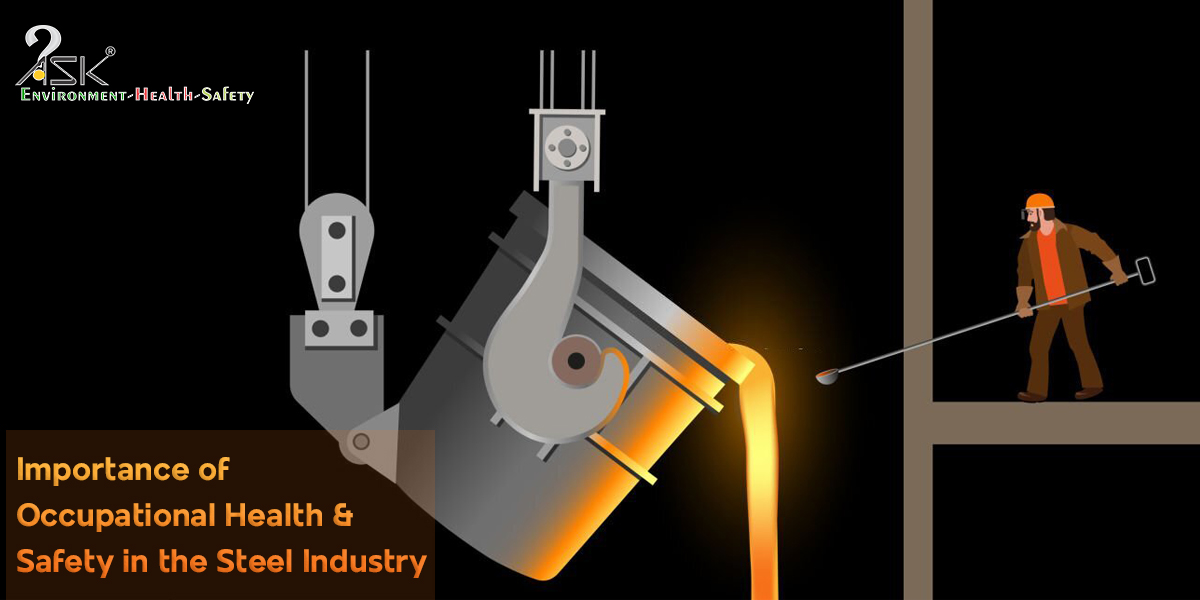The Importance of Safety Training

The construction Industry is the second largest industry after Agriculture in India. As an integral part of the infrastructure ecosystem, the construction sector gives tremendous boost to India’s economy. However, this sector remains unattractive, neglected, unorganized and skill-deficient. This is because of the temporary nature of activities, changing work-sites, hazardous and remote work locations, adverse weather/terrain conditions, uncertain employment prospects etc.
The construction industry employs around 17.62 million workers comprising of 55% unskilled and 27% skilled labour. The rest consist of support and technical staff (Kulkarni, 2007).
Unfortunately, both these large sectors, Construction and Agriculture, remain un-organized to a great extent. For regulating OHS matters in operating industries, the Indian Factories Act/Rule date back to 19th century but for Construction Industry, the first legislation came as late as 1996/1998 in the form of BOCW Act, 1996 & Central Rules, 1998. This is what the Act says:-
- To regulate the employment and conditions of service of building and other construction workers and
- To provide for their safety, health and welfare measures and for other matters connected therewith or incidental thereto.
A humble beginning has been made but the Construction Industry has to cover a long track to match the gigantic nature of challenges lying ahead. One of the major challenges is the acute scarcity of competent manpower at workmen, supervisors, engineering, managerial and top project management levels.
In recent years, the construction industry has registered enormous growth worldwide. Working in some of the most vulnerable segments of the unorganized sector, construction workers are prone to accidents. There are wide varieties of serious OHS hazards, to which workers are exposed and hence the rate of fatal and serious accidents in this industry is approximately 4 to 5 times that of the manufacturing sector.
In India, the Construction Industry is regulated by the following acts:-
- The Building and Other Construction Workers (Regulations of Employment and Conduct of Service) Act, 1996.
- The Building and Other Construction Workers Cess Act, 1996,
- The Contract Labour Act, 1970.
- The Inter-State Migrant Labourers of Employment Conditions of Service Act, 1979.
- Construction workers do not get benefit under the Employees State Insurance Act 1948, but are covered by the Workman Compensation Act, 1923 (Parveen & Patil, 2009).
The industry is tarnished by its reputation as “Dirty, Difficulty and Dangerous – the three Ds” (Murie, 2007, pp. 5 – 7). According to International labour organization (ILO), the industry which accounts for 7% of the global employment is responsible for 30 to 40 percent of the world’s fatalities.
With many types of hazards, a construction site is a cluttered workplace wherein safety is of paramount importance. Due to complexity of the work environment, vulnerability coupled with illiterate, unskilled manpower, makes it more difficult for the construction industry to overcome the alarming rate of accidents.
Occurrence of a large number of fatal accidents and poor health and safety concern of the labourers, is the main drawback of the construction industry. As per ILO, the rate of fatal accidents is 60,000 per year in the construction industry. Also about 30% of labourers are affected by health problems such as back pains, musculoskeletal disorders and other bone related health issues.
According to OSHA, 4,609 workers were killed on the job in 2011 (almost 90 deaths every week or 13 deaths every day), out of which 721 workers (17.5%) were killed in construction. The leading causes, also called “Fatal Four” of construction accidents in 2011, are falls, electrocutions, struck by object and caught-in-between. Three out of five construction worker deaths (410 workers’ lives in total) in the US were caused by the “Fatal Four”.
“Fatal Four” Defined by OSHA

Some of the critical factors leading to high rate of accidents in construction industry are:-
- Lack of training and awareness
- Unsafe methods and equipment used
- Negligence, failure of workers to obey work procedures
- Poor site management
- Failure to use PPE (personal protective equipment)
- Operating equipment without safety devices
- Harsh work operation
- Poor knowledge and skill level of workers
- Poor workers’ attitude towards safety
There is a serious need for reducing the occurrence of accidents. Several critical factors are leading to an increase in the rate of accidents in the construction industry. Proper training and awareness are the foremost steps to be taken while undertaking any task. Specific ‘competence building’ is required and if the job happens to be hazardous and very risky in nature, special measures are needed to make them fit for the job. Awareness (to be conscious of something) is also important, e.g. knowing about the EHS risks and hazards. Competence is the demonstrated ability to apply knowledge and skills to achieve the desired goal. Awareness and competence both, are achieved through the process of training and information sharing.
EHS training is a very important part of any EHS culture and it is often a legal requirement for an employer to provide it to all employees on recruitment, during induction, on specific job deployment or on being exposed to any new or increased risks due to:
- Being transferred to another job or given a change in responsibilities;
- The introduction of new work equipment or a change in use of existing work equipment;
- The introduction of new technology;
- The introduction of a new system of work or the revision of an existing system of work;
- An increase in the employment of more vulnerable employees(young or disabled persons);
- Particular training required by the organization’s insurance company (e.g. specific fire and emergency training).
EHS professionals need a unique and diversified type of knowledge and training to meet the challenges of the complex and hazardous nature of industries. Enhancing the quality of industrial manpower, particularly in the field of EHS, is a painstaking and skillful task needing expertise, infrastructure and resources. Quality, professionalism and competence are the practical needs of the hour in this vital field of EHS. Workplace safety training will provide employees withall the skills and knowledge they require to protect themselves and others from accidental deaths and injuries. It will also help in protecting facilities and equipment and in reducing the costs associated with it as well.
New trends and continuous advancement in technology has now made it easier for many industries to educate and impart training to the employees.
Safety training, if practiced in the company, helps the employees/workers practice safety while maintaining industry standards. Optimization of time and increase in organizational productivity are direct outcomes of safety training.
Don’t wait for incidents and accidents to happen, as that mightresult in drastic losses. Provide proper workplace training to all your Employees, Supervisors and Managers.



My husband is planning to invest in a construction firm, that’s why he’s currently looking for some sub-contractors that’ll he will be able to work with. I agree with you that safety training is important because it will provide employees’ safety, health and welfare measures. It’s a great thing that you were able to elaborate here on the critical factors that lead to a high rate of accidents in construction, such as the workers’ lack of knowledge in terms of safety.
You made a good point that proper safety training can help a person more easily adapt to new job assignments. My cousin is thinking about starting a warehousing business since he has a certain hardware store in mind that he could tap for a business partnership. Having proper OSHA safety training would surely go a long way for an operation like that.
I agree with what you said that safety training is paramount in construction because the site’s a cluttered workplace that could cause accidents. My father and I have been thinking of opening a construction company soon. Once everything is set and we have hired employees, we will definitely conduct safety training for them. Thanks!
You made a good point when you shared that workplace safety training will provide employees with the required skills and knowledge to protect themselves and others from any unwanted circumstances. It is also important to protect the facility from any dangers that could only incur losses to the company. I would like to think if a company is planning to improve its safety and security, it should consider hiring a reliable service to provide training to the employees so they have the skills and knowledge to safeguard themselves and others during any unwanted situations.
I’m glad you talked about safety training and how it improves your worker’s safety. Recently, one of my uncles said he wants to invest in a building project. My uncle mentioned he’d like to know more about construction safety and how to prevent a major accident, so I’ll be sure to share your tips with him! Thanks for the advice on how to provide a safe working environment for your crew!
I like that this post underlined that when considering construction safety training, it is best to ensure it is conducted by an authorized trainer. That way, we can be certain that we are obtaining the proper training. I will definitely keep this information in mind for future references.
Thanks for helping me understand that there are various hazards that workers are exposed to that could be fatal to their lives. With that in mind, it would be best to get the right OSHA training learnings they can get to prevent such issues from happening. It would also save the company from expenses like that if they invest in this aspect instead.